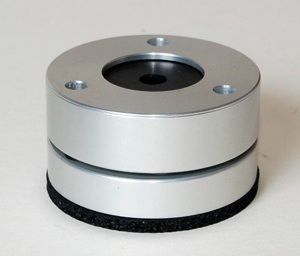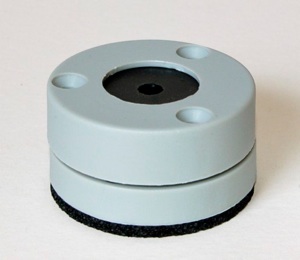Waterproof cable glands solved a problem when we installed our reversing camera system

July 2009
Last edited: 7 August 2009

Our reversing camera system came with 4-pin cabling which was already complete with connectors. Although this makes the system plug-and-play with no risks of connectors being fitted with incorrect wiring or poor connections, it does make it difficult to reconcile the larger hole needed for the connector with the small opening needed to seal against the cable.
Large dollops of sealant might suffice of course but this would look unsightly, might not provide a reliable seal and it is difficult to remove the cable and connector afterwards, should that be required.
This gland solved all of these problems and although it is overall quite a large fitting it provides a very neat and professional-looking solution.
But ... aluminium or plastic?
The gland housings are available in two alternative materials - aluminium or plastic, the latter being cheaper than the former.
We couldn’t decide but since we were installing two cameras we elected to use one of each, in the interests of product research.
The aluminium is machined from solid metal and provides a more rigid housing and gives confidence that will not distort if it is screwed hard onto a slightly curved surface. The base also has a wide smooth area to seal against the gasket which is placed between the housing and the panel surface.
We think it is also prettier (sad!) but perhaps also more noticeable if you prefer low key.
The plastic housing is hollow-walled and therefore not as rigid and more care needs to be taken in positioning the base gasket to ensure a good seal.
In practice both versions work effectively so it’s down to price, or maybe appearance. The aluminium version’s feel of professional solidly boosted our confidence.
Simple to fix
With each fitting we used a small amount of Sikaflex sealant on both surfaces of the base gasket - just a small ring around the hole rim in the gasket and around each screw hole; the sparse application ensured that none squeezed out to make a mess on the surrounding surface but at the same time guaranteed that the base was completely watertight. Probably it would be fine without using the sealant, but we prefer the sure way.
No sealant was used on the actual cable bush or between the top cap and base housing since these are firmly drawn closed when the cap is bolted down. This also means that the gland is easily disassembled simply by removing the three small machine screws which secure the cap, and the cable and connecter can then be removed or refitted.
Both models are supplied with stainless steel fixings: three screws to secure the base to the panel and three machine screws to fasten the cap to the base.
We used these convenient waterproof glands when we installed reversing cameras on our motorhome. Here is a brief description of our experience
Take a look at the PHOTO GALLERY where you can view pictures singly or as a large screen slide show.
A watertight solution
© All content copyright of Enetgy Limited - enetgy.co.uk - for campervanstuff.com, 2009



